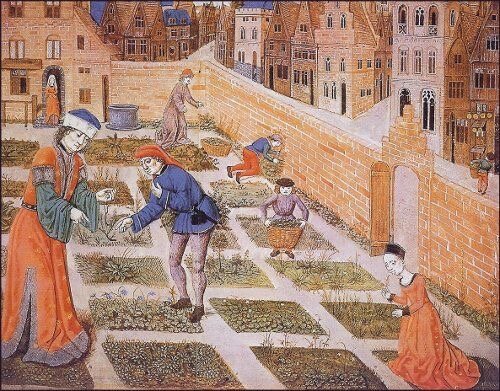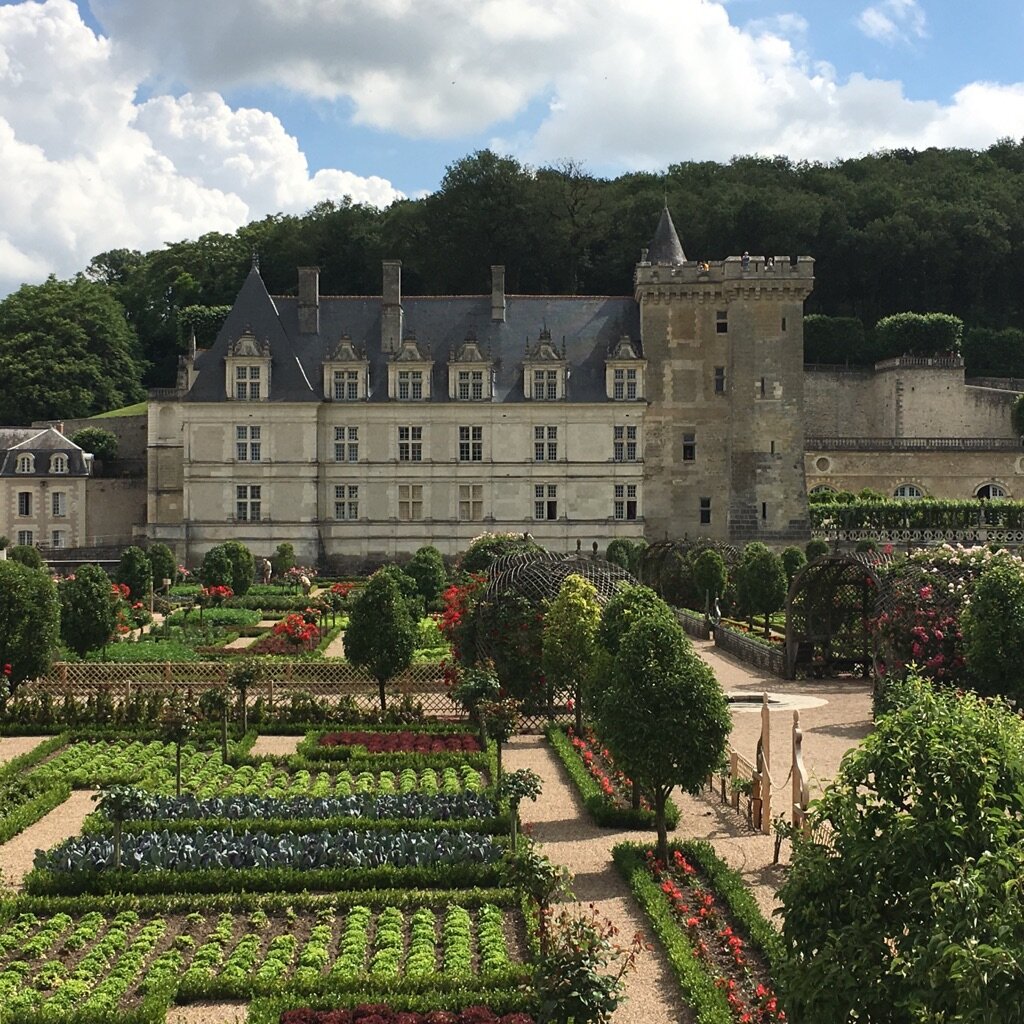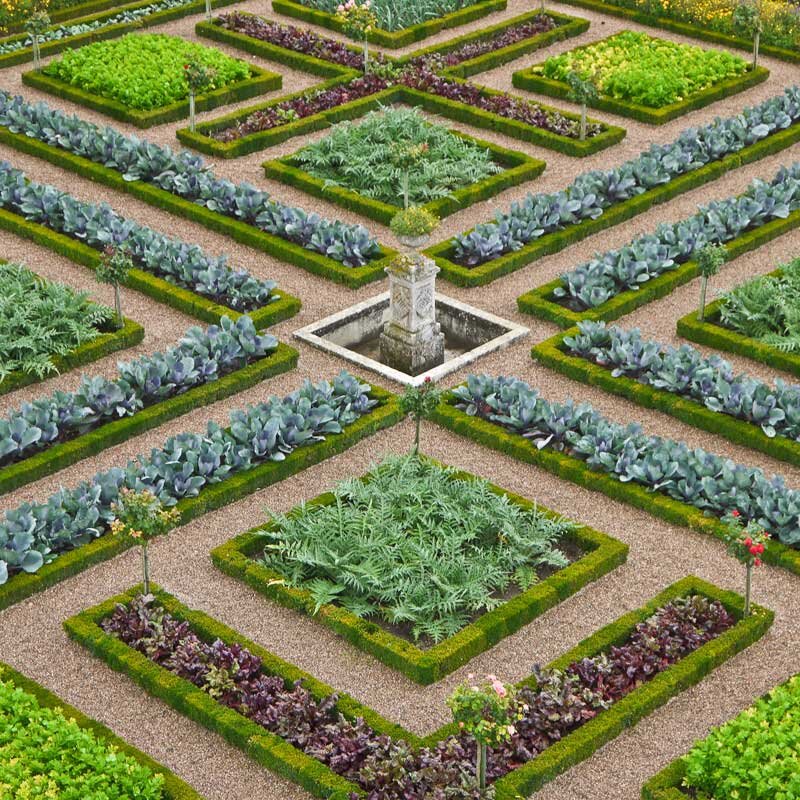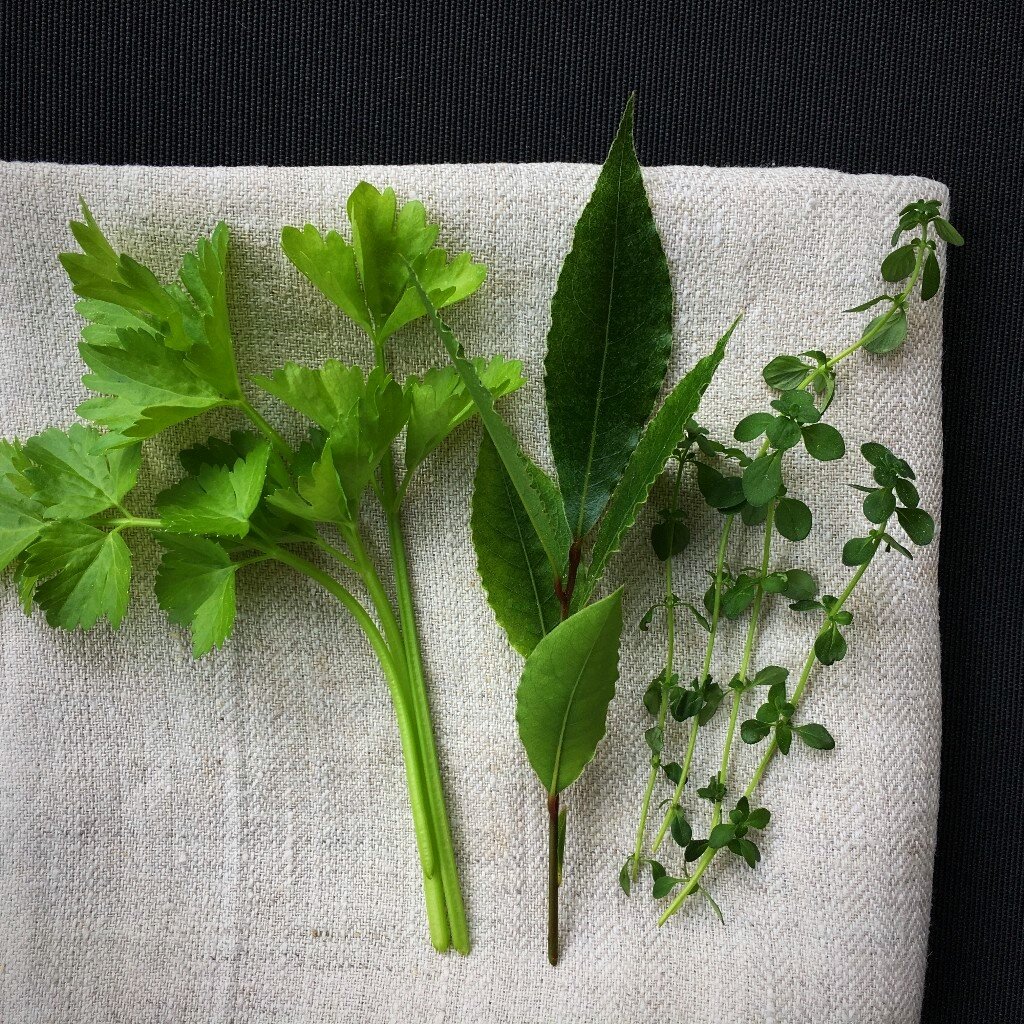The European vegetable garden has its origins in the Middle Ages. Monks laid out vegetable patches in geometric shapes in order to achieve an overall design of crosses.
Time is marked and measured in different ways. Clocks and calendars help us to organize our everyday lives, but time is also captured in the shift of colors for each season. Here in southwest France, the fresh greens of spring are replacing the dull gray shades of winter. Sunshine streams through our front door noting longer days across the stone floor. The rains have slowed and the garden beds are waiting to be turned and planted.
Nature's cues are telling me that it's time to attend to the potager.
I have cultivated many gardens in my lifetime. Beginning with a single row of strawberries lining a suburban driveway in the midwest that I proudly tended to as a young child, I was hooked on the idea that one could grow their own food. With every house I owned, I planted an asparagus bed to mark that “I was here.” It happened that just as each bed was starting to reward all the effort, I moved and thus needed to start another. I have left many a prolific asparagus bed across the United States.
I have tended to every type of garden from a tiny balcony garden in Berlin, Germany to a large coffee and avocado farm on the side of a volcano on the Big Island of Hawaii. Still, a common theme always emerged no matter the size. I planted a mix of favorite vegetables, fruits, flowers, and herbs that produced throughout the seasons.
This is a French potager at its very heart.
In France, the potager or kitchen garden has been an important part of country life for centuries. Literally, the French word potager means "for the soup pot." It is the connection between our garden and the simple meals we prepare with fresh flavors of the season.
Since Medieval times, French gardeners have intermingled vegetables, fruits, herbs, medicinal and dye plants, tisanes, and a variety of flowers in their beds. There is careful attention to the beauty and usefulness of each plant. One considers color and texture. One asks, how does each plant benefit the others? Most importantly, the garden is continually harvested and re-planted for a year-round supply of food. Think of your potager as something cyclical and not linear, where you plant once in spring and harvest in late summer. For a potager, one crop finishes its production, space is cleared, compost is added, and something else is planted in its place for the next season.
If you looking for historical inspiration, France's most famous and grand Renaissance potager - Villandry in the Loire Valley - will not disappoint. This kitchen garden is the high point of your visit even compared to the château. It consists of squares planted with a different geometric motif of vegetables and flowers. Everything comes under consideration. Color. Texture. Companion plantings. You'll find the blue of the leek tops carefully set against the red cabbage and beetroot. There is no “mingling.” Everything is in its own place juxtaposed to another. The feathery greens of carrots are artfully placed to provide texture and height when paired with a front row of red leaf lettuce.
This potager is designed as it would have looked in the 16th century using both the monastic influence of the geometric shapes and crosses as well as the influence of an Italian garden's emphasis on decorative elements such as fountains and arbors. The result is nothing short of spectacular. You must absolutely add Château Villandry to your list of sites to visit the next time you travel through the Loire Valley.
The kitchen garden at Villandry has two plantings each year: One in spring which remains in place from March to June; the second is in summer from June to November. Forty species of vegetables are used each year. The layout changes with each planting, both for the purpose of harmony of color and crop rotation. Everything is perfect in this garden thanks to a team of 10 full-time gardeners.
While there is a mix of plants, a potager does not mean "willy nilly." In true French fashion, there’s a lot of thought that goes into creating something that looks like you just "threw it together." You need to make careful choices, consider color, what plants thrive together, and how to stretch the garden over four seasons. You hunt for French touches such as weathered urns or decorative finials if you are creating a more formal kitchen garden. Or you look to add simple rustic baskets, too worn to be of service in the house but perfect to hold potatoes and ginger for easy harvesting. I love a good olive jar placed in the obligatory lavender patch. It’s much like an artist creating a painting:
You need to consider composition and the final design as well as the necessary ingredients for your favorite recipes.
Our new kitchen garden at Glandines will not be as grand as a walled garden of château fame but it will be carefully designed and beautiful in its simplicity. Despite its small size, I'll figure out how to fit all my heart's desires into several sections, each having seasonal plantings. There will be several sections: a culinary garden, salad garden, tea garden, dye garden, cutting garden, and medicinal garden. The reason I love a good potager is that it’s both beautiful and functional. While flowers do find their way into my plan on their beauty alone (peonies for instance), most plants serve a purpose. Form and function. Each part of the garden works together to create a beneficial collection for my table, dye pot, medicine chest, and even my morning cup of tea. The wonderful flexibility of any plan is that everyone's kitchen garden can be adapted to suit their own needs. It can constitute a few clay pots on an apartment balcony, or just a sunny window box ready to provide you something fresh for your dinner salad.
Think of it as your personal potager.
Here’s a simple block plan for this year’s spring plantings. I enjoy using my handmade inks created with plants I forage here on the property. Stinging nettles are in abundance right now and I carefully gather them with gloves for a tea and to crush them for a quick ink and dye.
"The kitchen garden satisfies both requirements, a thing of beauty and a joy for dinner."
- Peter Mayle
Some years ago, there was a garden in this same general area. We did a bit of weed whipping to knock down the tall grass. There are wild blackberries on one side and fruit trees on the other. Tim created the beds with a shovel - our only tool at the time - and I broke up the clumps of grass and leveled the beds. We found ourselves with the start of a potager.
The happiest of days are when young plants start to appear in the garden. A few Asian greens and lettuces are not daunted by the possibility of cold nights. I plant them as early as the first week of March.
What I love about a year-round garden is that it’s designed to supply your kitchen on a daily basis. As mentioned, a potager can be small, just a few rows, or one-foot squares. They can be planted in raised beds or containers. They can also be as large as you can manage. The main premise of a potager, no matter the size, is that as you harvest, you then plant something in its place for the next season.
Begin with a list of herbs with which you enjoy cooking. Herbs are the mainstay of our gardens and most are perennials or biannuals and so will last for years or will self-sow in place in their second year. Then, add in the next "layer" such as lettuces, radishes, and other microgreens. Consider where in the garden there is the most sunshine for those heat-loving plants such as tomatoes, aubergine, and lemon cucumbers. Carefully think about larger fruit-bearing plants such as raspberries and plan accordingly for necessary trellis needs. If possible, try to put in the "hardscape" at the start, rather than attempting to fit it in around existing plants. Create your wattle beds before you plant your salad greens. For the new garden, I have already requested three tuteurs to hold the pole beans and cucumbers. And there’s a perfect spot set aside for a small table and two chairs, a place to rest after weeding and enjoy some lavender lemonade.
I love radish pods. In fact, I grow radishes not for their underground fruit, but for this crisp pod. Harvest them when they are plump. They are a snappy addition to your salad or pickle them for a quick, delicious snack. Don’t harvest all the pods because you want some to mature and dry and provide you with your next source of seed. I plant these fellas all year long.
Other suggestions for your potager:
Plan your kitchen garden close to the house where it will be most convenient.
Make it a decorative as well as utilitarian space. Think about adding dwarf fruit trees, flowers, and shrubs along with your veggies and herbs.
Consider how the light enters the garden and place tall plants such as artichokes to the back.
Texture and color all come into play in the final plan.
Carefully consider the hardscape because fences, gates, trellises, rock walls are not easily changed. Perennials, too, need some thought for they will be in your garden for years to come.
Ask yourself, what plants self-sow easily? Be mindful of gathering seed heads if you don't want your mustard taking over the back garden.
Keep a record of your garden and refer to what worked well in years past.
Know that your potager will be ever-changing.
Microgreens are quick to harvest. I fill little "holes" in my potager every season with plants that I'll snip in just two weeks. I use them to top my sandwiches and add to my salads. In summer, I tuck certain seeds like heat-sensitive lettuce under plants like my bushy peppers to provide them shade. When you have a tiny garden, every bit of space is needed. Plus, a full garden keeps the weeds at bay. Well. . . in theory.
A bouquet garni is French for "garnished bouquet” - a bundle of aromatic herbs that you select to flavor soups, sauces, or casseroles. There is no one recipe. I select the herbs that best fit the dish I am preparing. But the classic French trio is comprised of parsley, a bay leaf or two, and thyme. Be sure to plant all three in your potager.
How we shape our days around time, where we invest our energy and place our focus, reveals what is most important to us. Gardening is an obvious investment in the future. From one week for microgreens to a decade for black cherries, a garden has you thinking about how each harvest will lead to the next. It’s a process. From reveling in the compost to artfully tying the tomatoes, a potager represents a dedication to that process and an investment of your time and talent. There is also a touch of historical significance and definitely elements of sustainability and wellness. I like to be close to the food I eat. I receive pleasure from seeing it grow, knowing there are no harmful chemicals added.
If well-planned and attended to, a potager will provide inspiration as well as delicious ingredients for your family's table. It's a beautiful way to mark time.
Wherever you live in the world,
may you be connected to the beauty and bounty of a garden.
À bientôt,
Karen
I add a blog post quarterly to Karen’s Atelier - more or less with the changing seasons. For a weekly dose of something "short and sweet" and a nod to French culture, be sure to subscribe to my Weekly Voilàs on this website. For those that have already subscribed, merci. Your support encourages me to take the next step in “living a french life.” It is a privilege to share this journey with you.











